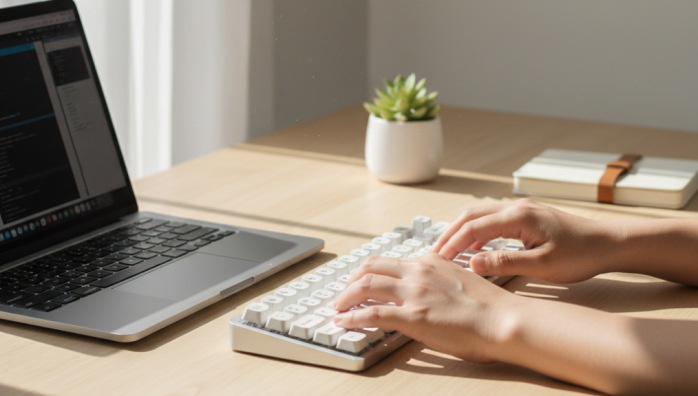Creating a Distraction-Free Workspace Setup
by admin in Productivity & Tools 23 - Last Update November 24, 2025

My desk used to be a magnet for chaos. Every flat surface seemed to scream for another half-empty mug, a stack of \'important\' papers, and a tangle of mystery cables. Digitally, it was worse. My desktop was a minefield of icons, and I navigated my work through an ocean of browser tabs. I honestly thought I thrived in this creative mess, but in reality, my focus was fractured, and my productivity was paying the price. The journey to a distraction-free setup wasn\'t about buying new organizers; it was about changing my entire philosophy of work.
The digital purge: My first, and hardest, step
I started with my computer because it felt like the source of most interruptions. My first \'aha\' moment was realizing that digital clutter is just as taxing on your brain as physical clutter. I dragged every single file and shortcut from my desktop into a single folder named \'SORT LATER.\' The immediate visual calm was staggering. Next, I tackled notifications. I went through my system settings and ruthlessly disabled every non-essential alert. No more pop-ups, no more dings. It felt strange at first, like I was missing out, but after a day, I realized I wasn\'t missing out; I was finally tuning in to my actual work.
Physical space, mental space: The core connection
With a calmer digital screen, the physical mess on my desk became glaringly obvious. I adopted what I call the \'arm\'s reach\' rule. If I don\'t need it for the task I\'m currently doing, it doesn\'t belong within arm\'s reach. My phone now lives on a charger across the room. The stack of books I intended to read? They\'re on a bookshelf. This simple act of creating physical friction between me and potential distractions was a game-changer. It forced me to be intentional. Do I really need to check my phone, or am I just bored? Having to stand up and walk across the room often provided the answer.
My end-of-day shutdown ritual
Perhaps the most powerful habit I built was the \'shutdown ritual.\' For the last five minutes of my workday, I don\'t answer emails or start a new task. Instead, I reset my workspace. I wipe down the desk, put my pen and notebook away, close all unnecessary applications on my computer, and plan the single most important task for the next morning. When I arrive at my desk the next day, I\'m not met with the remnants of yesterday\'s chaos. I\'m greeted by a calm, inviting space that\'s ready for deep work. It tells my brain, \'This is a place for focus.\'
Tools aren\'t the enemy, but how you use them can be
I used to blame tools like Slack and email for my lack of focus. The truth I had to accept was that I was letting them control me. Instead of letting them run wild, I configured them to serve my focus. I now keep communication apps closed and only open them during specific, scheduled blocks of time. I treat them like a post office—I visit when I need to, but I don\'t live there. This batching technique allows for long, uninterrupted stretches of concentration, which is where real progress happens. The goal isn\'t to eliminate tools but to establish clear boundaries with them.
Creating this workspace wasn\'t a one-time project. It’s an ongoing practice. Some weeks it gets a little messy, and I have to consciously reset. But by building these simple systems, I\'ve created an environment where focus is the default, not a constant battle. And that has made all the difference.














